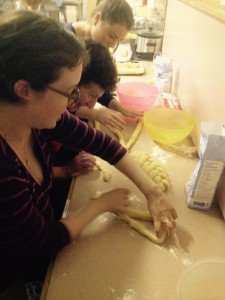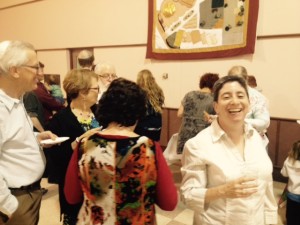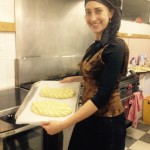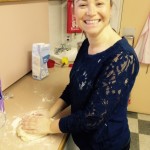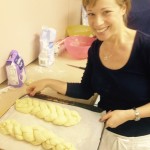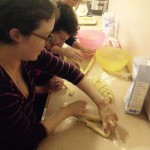The Shabbos Project Adelaide
The Adelaide Shabbos Project was an amazing success! After watching this video:
Rebbetzin Rachel was inspired to bring the Shabbos Project to Adelaide, South Australia.
With the help of the whole community, the Shabbos Project in Adelaide was a huge success!
Thursday night was a challah bake that brought together three spiritual leaders and women from all walks of life, from Israelis to first-time challah bakers. (Read more here!)
Friday night the ladies of the community joined with WIZO South Australia in a communal candle lighting ceremony. This was followed by a kabbalat Shabbat service led by visiting Rabbi Philip Heilbrunn of Melbourne, whose booming voice led Adventuring Akiva to clap and dance in the aisles.
After the service was a communal dinner with preparation led by a long-time community stalwart. With nearly 40 people in attendance, the Adelaide Jewish community was well-represented. Ages ranged from under one to the 80s! Food included a first course of dips and salmon mousse, a main of half a dozen salads and chicken, and dessert of sorbet and berries. Rebbetzin Rachel introduced our visiting rabbi with some stirring words about Jewish unity and how to use technology to keep Torah better. Rabbi Heilbrunn then gave an inspirational sermon about the importance and the power of Shabbat.
Saturday morning saw a popular service led by Rabbi Heilbrunn, followed by a community kiddush. Then there was a delicious lunch of homemade hummus and tehini, spinach salad with heirloom tomatoes and balsamic vinegar pearls, tropical barbeque salmon, lasagna, and a selection of homemade sorbets, held at the rabbi’s house.
Finally, the Shabbos Project ended with maariv services and a havdallah ceremony. Then there were mini-concerts given by Rabbi Heilbrunn and Rabbi Ben, a performance by the Jewish Adelaide Zionist Youth (JAZY), a sing-along and kumzitz, and refreshments prepared by Rebbetzin Rachel and the cheder girls.
All in all, the Shabbos Project Adelaide was a big success! Visitors came all the way from Melbourne to participate and Jews from all walks of life, from the strictly observant to the strictly secular, came together in a display of Jewish unity. Adelaide Jews are already asking Rebbetzin Rachel to begin organizing for next year!
Kol hakavod, Adelaide and the Shabbos Project!
Read More

